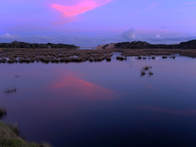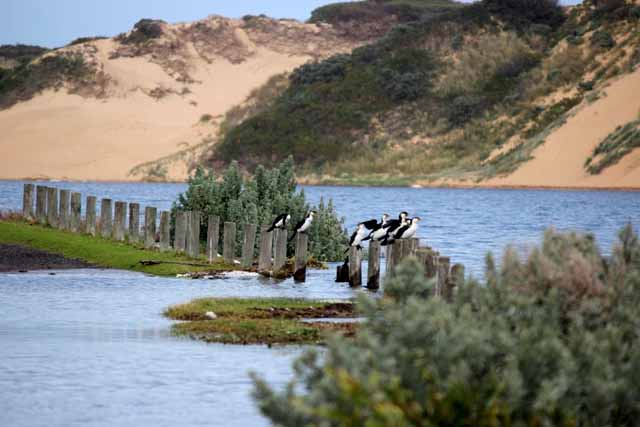
A COUPLE of visitors stood at the Mouth of the Powlett bridge yesterday and looked anxiously around. Water as far as the eye could see. The bridge was closed, the road on the other side submerged by the watery expanse.
“I haven’t seen it this bad for years,” said one gloomily.
“Wouldn’t you think they’d open the mouth!” said the other.
Which, as it happens, was exactly what a Parks Victoria contractor was doing at that moment, with a bulldozer shifting a sandbar that has blocked the river from reaching the sea for the past three months.
This year’s low autumn river flows, combined with a big swell, caused a build-up of sand that closed the mouth of the Powlett in late March with the estuary gradually filling in the months since then.
But the gloom of the two visitors was misplaced. Far from being a disaster, the periodic flooding is a time of full and plenty for water birds and freshwater fish, not to mention for birdwatchers and kayakers.
 Powlett Express, September 24, 1915
Powlett Express, September 24, 1915 But a report prepared for the West Gippsland Catchment Management Authority (WGCMA) in 2008 concluded that the periodic closing of the mouth of the Powlett was essential to the health of the estuary and floodplain. Artificially opening the mouth could cause major problems. It recommended an opening once a year, if necessary, during late winter or early spring.
WGCMA CEO Martin Fuller says there are huge environmental benefits of the river mouth closing. “The wetlands are home to, and provide food for, many species of fish, birds and invertebrates. There is a flow-on effect when the river mouth closes. Algae begins to grow which provides food for insects and fish. The calm waters then turn into a fish nursery and with the increase in fish and insects birds come to feed.
“An increase in freshwater river flows can create a natural opening. This will also trigger fish migration both upstream and out to sea.”
But the catchment management authority also has to take into account the concerns of surrounding landholders. When the river mouth closes, monitoring begins to decide if and when an artificial opening should be attempted.
If the sandbar is opened under the wrong conditions, oxygen-rich water from the top of the estuary drains into the sea, leaving the oxygen-depleted water at the bottom, which can result in large fish kills. On top of that, it’s not always effective as the estuary mouth is more likely to reclose after an artificial than a natural opening.
For the past couple of months, staff and a team of local volunteers from EstuaryWatch have been testing temperature, oxygen levels and turbidity at selected sites along the estuary.
The stars aligned yesterday with the right dissolved oxygen levels and tides, and rainfall predicted. By dusk, several hours after the opening, the water level had dropped considerably.
WGCMA’s Dan Garlick said the rate of draining depended on many factors. “It varies with each opening. The water can slowly recede or it can drop quite dramatically.”
While the expanse of water on the floodplain will recede, and the road to the Mouth of the Powlett will re-open, the estuarine billabongs with their teeming bird and fish populations will remain for some time.
For more information about the Powlett River Mouth, the estuary and the closure visit www.wgcma.vic.gov.au.
Visit Estuary Watch for more information and monitoring data from the Powlett River Estuary.
